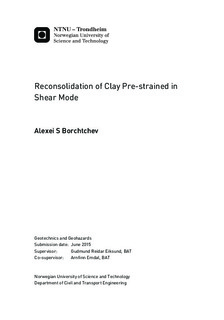Reconsolidation of Clay Pre-strained in Shear Mode
Abstract
Through the past years unexpectedly large settlements of the existing structures have been registered as a result of geotechnical site works, and especially, due to the boring and installation of steel core piles. One of the recognized effects related to the bored piles which may lead to the settlements, is remoulding and reconsolidation of soft clay in a limited zone around the pile shaft during installation phase.The radial extent of the remoulded clay around the bored shaft remains unknown, but the pore pressure measurements from recent projects indicate that installation of bored shafts may have larger impact on the surrounding soft soil than what is known for the driven piles.During the past decades, large amount of research has been done on the effects of pile driving and axial capacity of driven piles. The research has resulted in several analytical and numerical methods for prediction of strains, stress changes and consolidation times due to the installation of driven piles. Contrary to the driven piles, there is fairly limited amount of research dealing with the effects of bored shaft installation.Through an extensive laboratory test programme, the thesis investigates how installation of bored shafts may affect strength and compressibility properties of the surrounding soft soils. The simulation of pile installation effects is achieved by subjecting different clay types to different levels of pre-straining through extrusion. The strength and compressibility properties of pre-strained samples are respectively evaluated by falling cone and oedometer testing. The same tests are also carried out on manually remoulded material. Furthermore, an attempt is made to identify the correlation between different levels of reconsolidation stresses and increase in shear strength of pre-strained reconsolidated samples, as well as volume changes due to the reconsolidation. The laboratory test programme also includes index and oedometer tests on undisturbed samples of the same clay types.
